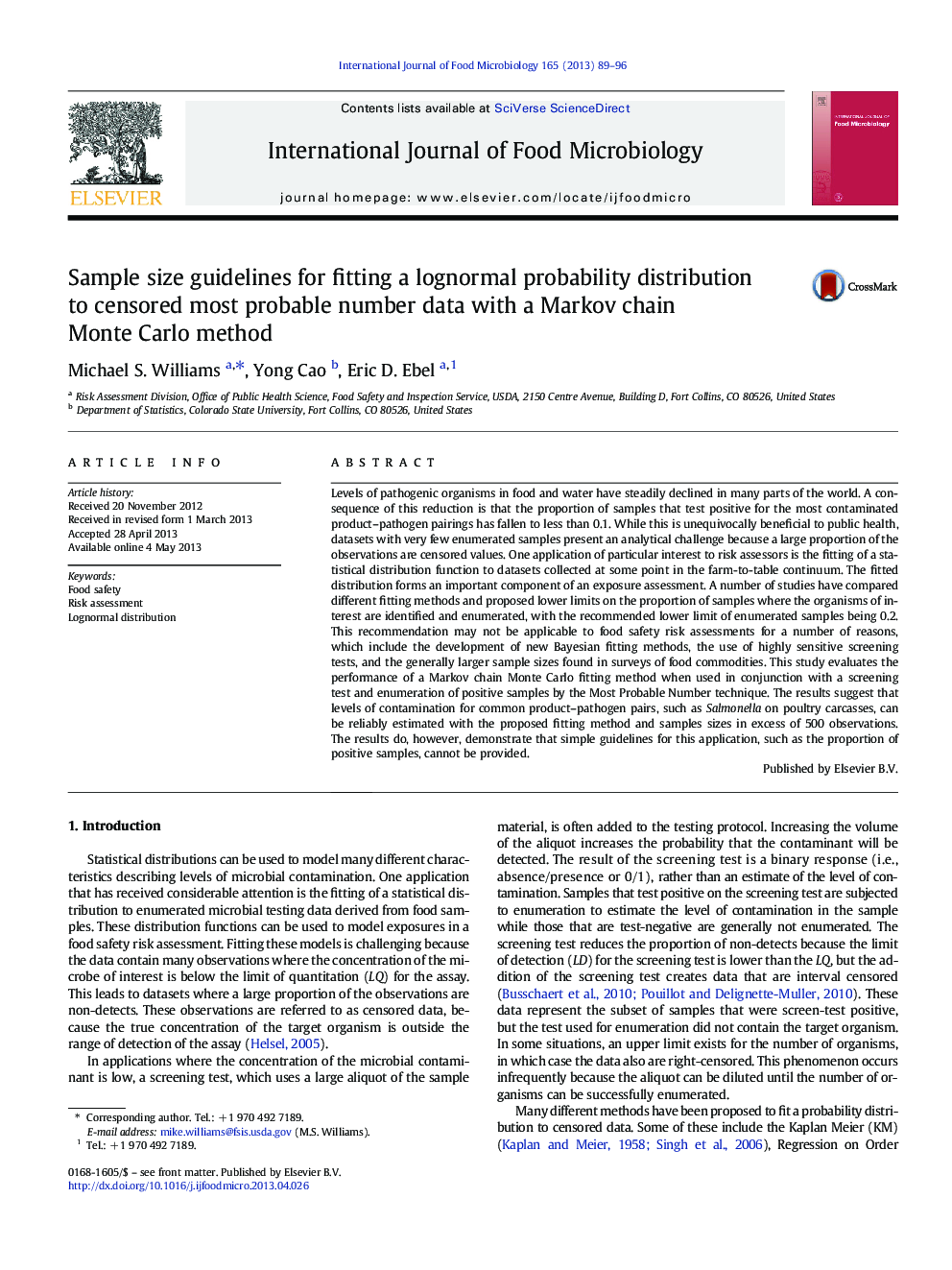| کد مقاله | کد نشریه | سال انتشار | مقاله انگلیسی | نسخه تمام متن |
|---|---|---|---|---|
| 4367095 | 1616621 | 2013 | 8 صفحه PDF | دانلود رایگان |

• Low levels of microbial contamination in food result in heavily censored datasets
• Bayesian methods can be used to fit a statistical distribution to censored data.
• Current guidelines for fitting a distribution suggest no more than 80% censoring.
• Convergence of Bayesian fitting method is assessed for heavily censored datasets.
• Suggestions for maximum levels of censoring are provided.
Levels of pathogenic organisms in food and water have steadily declined in many parts of the world. A consequence of this reduction is that the proportion of samples that test positive for the most contaminated product–pathogen pairings has fallen to less than 0.1. While this is unequivocally beneficial to public health, datasets with very few enumerated samples present an analytical challenge because a large proportion of the observations are censored values. One application of particular interest to risk assessors is the fitting of a statistical distribution function to datasets collected at some point in the farm-to-table continuum. The fitted distribution forms an important component of an exposure assessment. A number of studies have compared different fitting methods and proposed lower limits on the proportion of samples where the organisms of interest are identified and enumerated, with the recommended lower limit of enumerated samples being 0.2. This recommendation may not be applicable to food safety risk assessments for a number of reasons, which include the development of new Bayesian fitting methods, the use of highly sensitive screening tests, and the generally larger sample sizes found in surveys of food commodities. This study evaluates the performance of a Markov chain Monte Carlo fitting method when used in conjunction with a screening test and enumeration of positive samples by the Most Probable Number technique. The results suggest that levels of contamination for common product–pathogen pairs, such as Salmonella on poultry carcasses, can be reliably estimated with the proposed fitting method and samples sizes in excess of 500 observations. The results do, however, demonstrate that simple guidelines for this application, such as the proportion of positive samples, cannot be provided.
Journal: International Journal of Food Microbiology - Volume 165, Issue 2, 15 July 2013, Pages 89–96